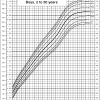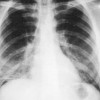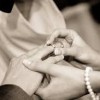Sex practice correlates of human immunodeficiency virus transmission and acquired immunodeficiency syndrome incidence in heterosexual partners and offspring of U.S. hemophilic men
Abstract
We assessed the risk of human immunodeficiency virus (HIV) transmission from heterosexual seropositive hemophilic men to their female sex partners through an HIV serosurvey and questionnaire study conducted during 1984-1987. Five percent of 21 female partners of asymptomatic men and 11% of 35 partners of HIV-symptomatic (acquired immunodeficiency syndrome [AIDS], AIDS-related complex [ARC], peripheral generalized lymphadenopathy [PGL]) hemophilic men had been infected when first tested.… Read more




